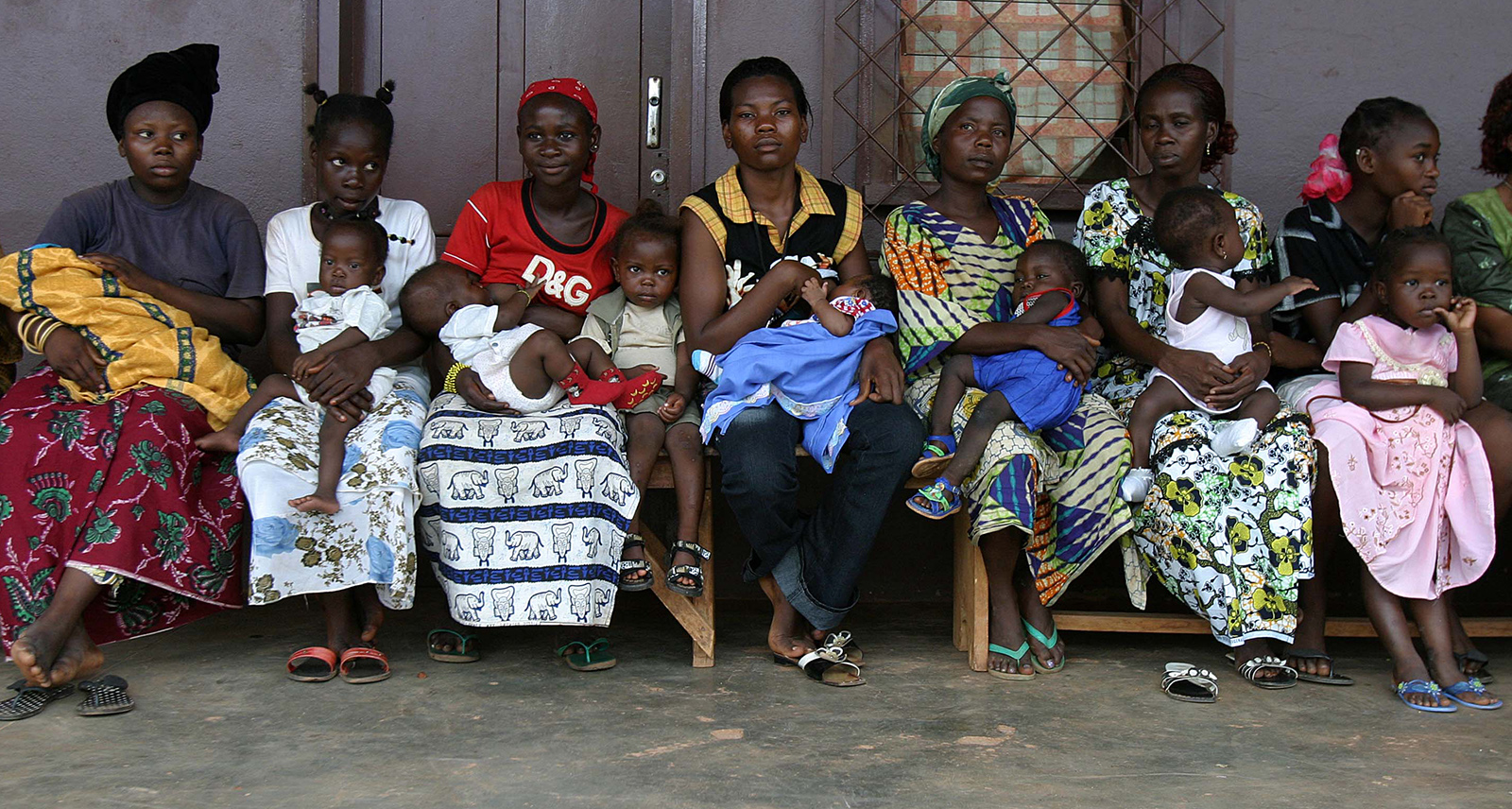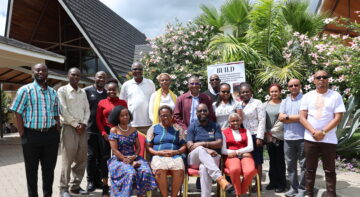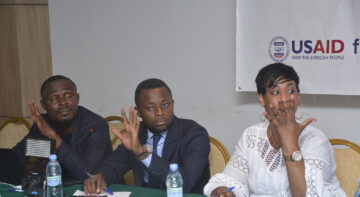Blogs

It is widely acknowledged that “investing” in women and girls translates to broader social and economic impact, an approach referred to as “smart economics,” the “Double Dividend of Gender Equality,” or the “efficiency approach” to women in development.
Most African countries continue to lag behind the rest of the world on women’s participation in development, in large part due to deeply entrenched, discriminatory views about the role and position of women and girls in society, which relegate women to an inferior position relative to men and result in unequal power relations between men and women. Referred to as “harmful traditional practices,” these discriminatory views legitimize and perpetuate various forms violence against women including female genital mutilation or cutting (FGM/C); forced feeding of women to make them pleasing to men; early marriage; the various taboos or practices which prevent women from controlling their own fertility; preference for sons over daughters; female infanticide; early pregnancy; and dowry price among others.
These discriminatory views and harmful practices often prevent women from achieving their full potential as productive members of society because they result in their unequal access to education, healthcare, economic opportunities, and participation in governance and politics. Even in countries where women are playing a greater role in development, governance and politics, such as in Kenya, women are treated and judged disparately and more harshly, by institutions as well as the public, in comparison to their male counterparts. In Kenya, recent corruption cases brought against both male and female leaders have revealed this inconsistency in treatment and judgement. One high-profile female government official’s romantic relationships became the focus of public and media scrutiny and diverted attention from the case brought against her and the broader problem of rampant corruption under the current government. While she eventually stepped down from her post, she did so after months of public humiliation. This is unlike the treatment that male politicians face, whose intimate relationships are never scrutinised.
Decades of global advocacy culminate into concrete actions
Starting in the 1950s, the United Nations and other bodies involved with human rights began interrogating the effect of harmful traditional practices on the health and rights of women and advocating for their elimination. These efforts intensified in the 1980s and 1990s and culminated in 1994 at the International Conference for Population and Development (ICPD), where delegates placed the rights of women and girls at the centre of development. The conference urged governments to increase public awareness of the value of girl children through public education, in order to promote equal treatment for girls and boys at all levels. The conference also emphasised that child marriages should be eliminated and arranged marriages discouraged. Governments were urged to put a stop to FGM and ensure that rehabilitation and counselling facilities were available for victims of FGM. The 1994 ICPD ignited a series of other major initiatives that aimed to ensure progress on gender equality and women’s empowerment in the two decades that followed.
- In 1995, a comprehensive fact sheet, Harmful Traditional Practices Affecting the Health of Women and Children was published by the United Nations to articulate the various forms of harmful traditional practices. The same year, the Fourth World Conference on Women was held in Beijing and adopted a platform for action to remove obstacles to women’s active participation in all spheres of public and private life through a full and equal share in economic, social, cultural, and political decision-making.
- In 2000, the Millennium Development Goals (MDGs), a blueprint agreed to by all the world’s countries and all the world’s leading development institutions, galvanised unprecedented efforts to meet the needs of the world’s poorest. The MDGs were consolidated into eight broad goals with a 15-year timeline that concluded in 2015. Goal 3 of the MDGs aimed to promote gender equality and women’s empowerment. Success in achieving Goal 3 would be measured using three indicators: closing the gender gap in education at all levels; increasing women’s share of wage employment in the non-agricultural sector; increasing the proportion of seats held by women in national parliaments.
- Finally, in 2006, the United Nations Secretary General conducted a study on Violence against Women and launched a related global campaign.
The African Women’s Decade is Born
Africa governments committed to adapt these global agreements at regional and national levels and to be held accountable for their achievements. Various regional frameworks in support of gender equality and women’s empowerment were adopted by the African Union to guide the development of sub-regional and national frameworks, policies and programs. These included:
- The Protocol on the Rights of Women in Africa in 2003;
- The Maputo Plan of Action on Sexual and Reproductive Health and Rights in 2006 to take the continent forward towards the goal of universal access to comprehensive sexual and reproductive health services in Africa by 2015 including the reduction of gender-based violence;
- The declaration of 2010-2020 as the African Women’s Decade in 2008 to advance gender equality by accelerating the implementation of Dakar, Beijing, and African Union Assembly Decisions on Gender Equality and Women’s Empowerment, through dual top-down and bottom-up approach; and
- The Framework for Action and Recommendations on Harmful Traditional Practices in 2011 which identifies priorities for action in combating harmful traditional practices.
At the sub-regional level, the Southern African Development Community adopted a Protocol on Gender Equality, while the Economic Community of West African States has instituted a gender policy focused on mainstreaming gender in policy design and implementation.
By 2010, a significant number of countries had enacted laws combating various forms of violence against women, including domestic violence (14 countries) and FGM/C (25 countries), and ensuring equal access to employment opportunities and social protection services (21 countries). National plans and programs were also in place in some countries to combat the various forms of violence against women. In addition, most countries had in place laws and policies on maternity protection.
Notable progress is evident but gender inequalities persist
A review of the MDG 2015 targets revealed that notable progress had been made towards enhancing women’s and girls’ status and participation in Sub-Saharan Africa, but that challenges persist. According to the 2015 MDG report, Sub-Saharan Africa achieved the best record of improvement in primary education of any region since the establishment of the MDGs. Between 1990 and 2012, the absolute enrolment in the region more than doubled, from 62 million children to 149 million. However, girls continue to face barriers to schooling in the region. While there has been a closing of the gender gap through a substantive increase in girl’s school enrolment at primary level, the region has 57 percent (33 million) of the world’s out-of-school children population, of which 55 percent are girls. In addition, girls’ school enrolment at the secondary and tertiary levels is the lowest among all regions of the world, with the gender gap at the tertiary level widening between 2000 and 2015.
According to the 2015 MDG report, Sub-Saharan Africa also registered the most impressive progress in women’s access to paid employment in the non-agricultural sector, increasing from 24 percent to 34 percent from 1990 to2015. However, the region still lags behind the average for developing countries (35 percent), the world (40 percent), and developed countries (48 percent). The 2015 MDG report also found that women in the region are gaining more power in politics. The proportion of seats held by women in single or lower houses of national parliament increased from 13 percent in 2000 to 23 percent in 2015, which is not far behind the developed regions (25 percent). Rwanda made the biggest gains in women’s representation during the last 20 years, with an increase of 60 percentage points. However, as noted earlier women in governance and politics face disparate and harsher treatment and judgement relative to their male counterparts”though this is not unique to Africa.
So, what is the way forward?
While notable progress has been made to reduce gender inequality and improve women’s empowerment in the African region, efforts need to be sustained and intensified, particularly at the national level. African governments that have not yet enacted laws and/or put in place policies, plans, and programs to ensure equal access to education, healthcare, economic opportunities, and leadership for girls and women should do so. But beyond this, there is a need to ensure the enforcement of laws and implementation of policies, plans, and programs if progress is to be achieved. Therefore, governments must work in partnership with communities and must allocate the necessary financial and human resources and tools for successful implementation, including gender sensitive data collection and reporting tools. Notably, African governments can learn from each other about what works and what does not work in the region. In addition, there is an increase in evidence that can assist governments in identifying and designing effective interventions for tackling harmful traditional practices though more research in this area is needed.
Given the current status, there is optimism that African governments are headed in the right direction. This optimism will only be justified if efforts are sustained in countries where the most progress has been made and intensified in countries that are lagging behind. The MDGs were crucial in getting African countries to achieve the current progress on gender equality and women’s empowerment. This illustrates the importance of such global development frameworks in catalyzing progress on pressing development issues. The recently established Sustainable Development Goals (SDGs) will track progress on 17 goals and 169 targets over the next 15 years. The SDGs fifth goal focuses on achieving gender equality and empowerment of all women and girls and can be expected to have a larger impact, given the SDGs broad emphasis on inclusivity.
Violet Murunga, MPH, is a Senior Knowledge Translation Officer at the African Institute for Development Policy (AFIDEP) in Nairobi, Kenya – a member organisation of the Southern Voices Network for Peace-building.
This blog piece was initially published on Africa Up-close, a blog of the Africa program at the Wilson Center.
Related Posts





